Fujifilm X-S10 APS-C Mirrorless Camera Review:
The Fujifilm X Series cameras have, for the most part, at least one feature in common, and that’s their classic controls that are reminiscent of the older days of film. This is one of their major selling points but here’s the problem: not everyone is a fan of these types of controls. I’ve heard many say that they love the Fuji cameras, and their capabilities but wish they had similar controls to whatever current DSLR camera they might be using. In other words, they would make the switch if the controls where just a bit more similar to what they have on their current setup. So, to attract these photographers, Fuji released the X-S10. I tested the X-S10 back in November/December (my site was being updated and moved to a new host, so was delayed in posting this), and here’s what I thought of it.
Fujifilm X-S10 APS-C Mirrorless Camera Build Quality:
Let’s first take a look at the build. I feel like the Fuji bodies have steadily improved in terms of build over the years. I’ve own many of them including the first X100, and the ones I did not buy, I reviewed; I feel like the quality has only gone up, and the X-S10 is no exception. The Fuji X-S10 is made of magnesium alloy, and it feels quite solid in the hands. I really like the feel of it, and best of all, with the battery and SD card, weight is 465 g, which is not heavy at all. Speaking of the battery, you get about 325 shots per charge. Overall, the X-S10 is definitely something that you can carry around without feeling tired at the end of the day.
Note from Admin: the photos of the X-S10 below were provided by Lawrence (Instagram: @law.rence.space). I had complications when I migrated this site, so I’ve had tons of projects that piled up. Somehow, I lost my products shots but Lawrence, who is also a great photographer, was very kind to help me with photos of his own X-S10. Go check out his Insta when you get a chance!
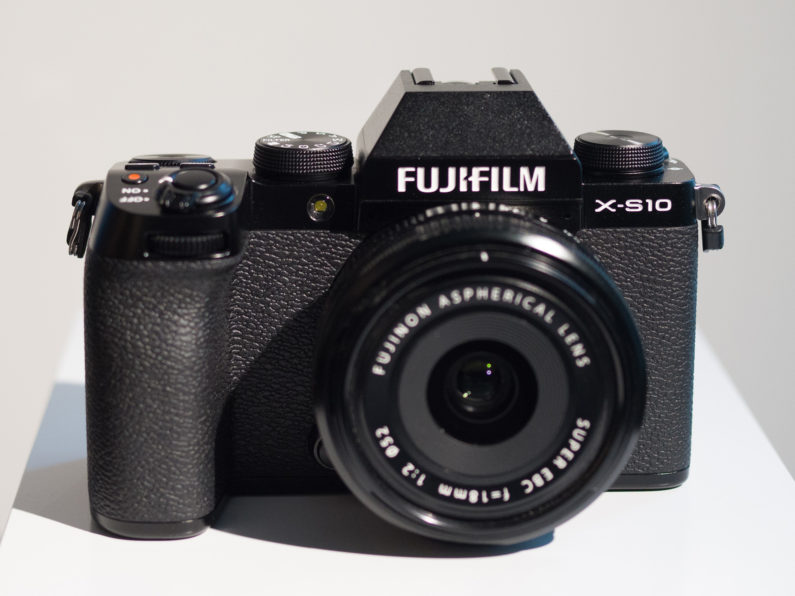
↑ The Fuji X-S10 with the XF 27mm f2.8 attached. Image by @law.rence.space
So, let’s take a look at what has really changed on this camera versus other X Series models. Unlike a similarly priced X Series camera like the Fuji X-T30, which has more traditional manual dials for shutter speed, etc., you get mode dials on the X-S10 similar to some DSLRs. So, if you’ve been shooting with one of the big brand DSLR makers for a while now, and you want to make the switch to the Fujifilm system because maybe you want something a bit lighter, and more compact, this might just be the camera for you.
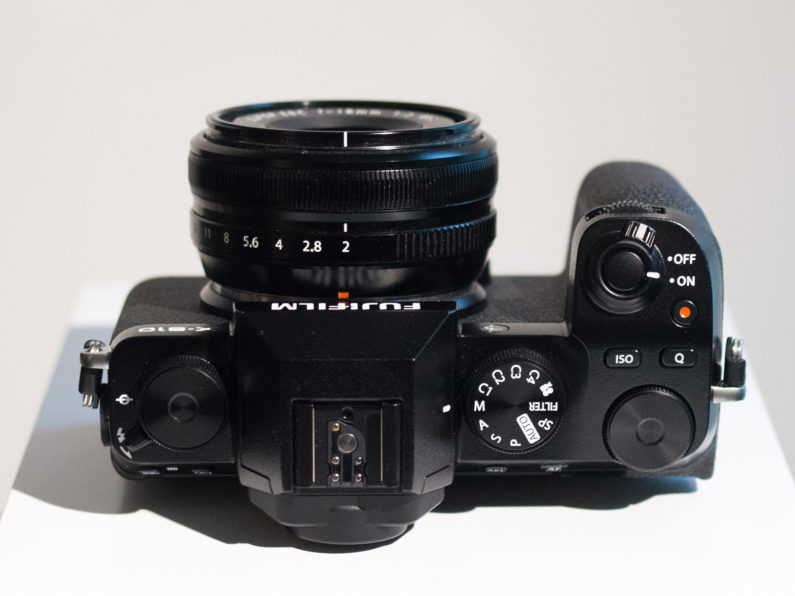
↑ Top view of the X-S10. Image by @law.rence.space
As for how I feel about it, I love the traditional controls. I grew up with them during the film days, and being a Leica M user for so many years, I’ve grown accustomed to them. However, they aren’t a make or break issue for me; I’ve sold my M system a while back and switched to the SL system, which doesn’t use the traditional controls, and I’m fine with it. Yes, it took a little time to get used to but for me, it’s really more about how the camera works, handles, and helps me do my job overall. I have to say, the X-S10 is now one of my favorites in the X Series system, and here’s one reason why.
If you look at the Fuji X-S10, you’ll notice that it has a pretty large grip, at least when compared to say the X-T30. The X-S10 is seriously one of the most comfortable cameras to hold that I’ve used in the X Series system, and this grip definitely is one of the reasons for this. I think the ergonomics are brilliant, and for those who favor the more traditional controls on cameras, I urge you to at least give the X-S10 a try. The grip just feels right, and it offers plenty of support yet its not outrageously large either. The camera itself, while not pocket size, is still plenty compact as well. These smaller mirrorless cameras can be great for things like travel or street because they are so compact but often times, when you attach a lens that is only slightly larger than average, the cameras can feel front heavy or they don’t feel quite as nice in general. This grip helps alleviate the problem. You can easily shoot the X-S10 with just one hand, and even with a larger lens.
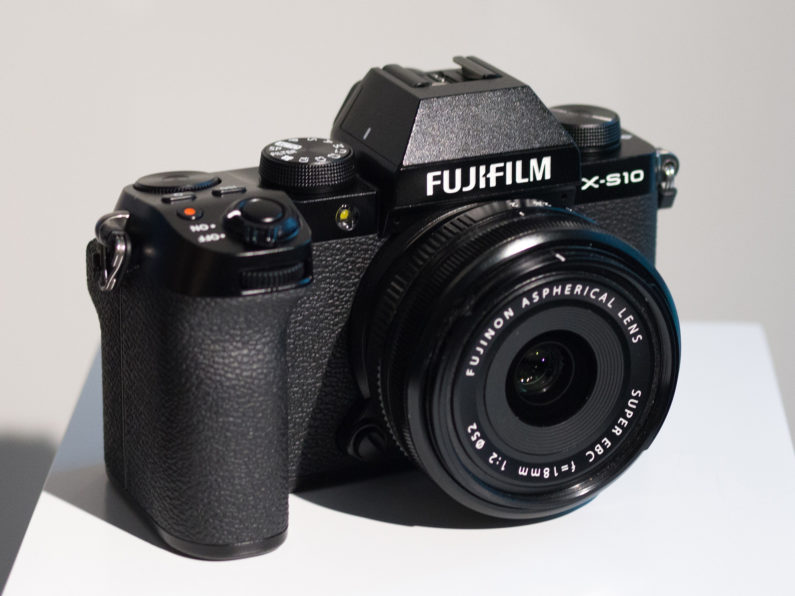
↑ The grip makes the X-S10 very comfortable to hold. Image by @law.rence.space
So, I am definitely a fan of the overall ergonomics of the Fuji X-S10 but another reason why this is one of my favorite X Series cameras currently is because like the rest of them, the X-S10 is jam-packed with features. There are even a lot that come from the higher end models like the Fuji X-T4 as well. So, let’s quickly go over some of the more notable features of this camera.
For one, the X-S10 features a 2.36m-dot electronic viewfinder, and a rear 3.0″ 1.04m-dot touchscreen LCD display. The EVF is not groundbreaking tech but it is in line with with competitors. It’s also plenty decent enough to use, and I absolutely had no issues with it. It’s bright, clear, and the colors are just right. You can even increase the EVF’s frame rate to a whopping 100fps in Boost Mode. The display is also decent, and uses vari-angle design, so you can adjust for high, low, and front-facing angles.
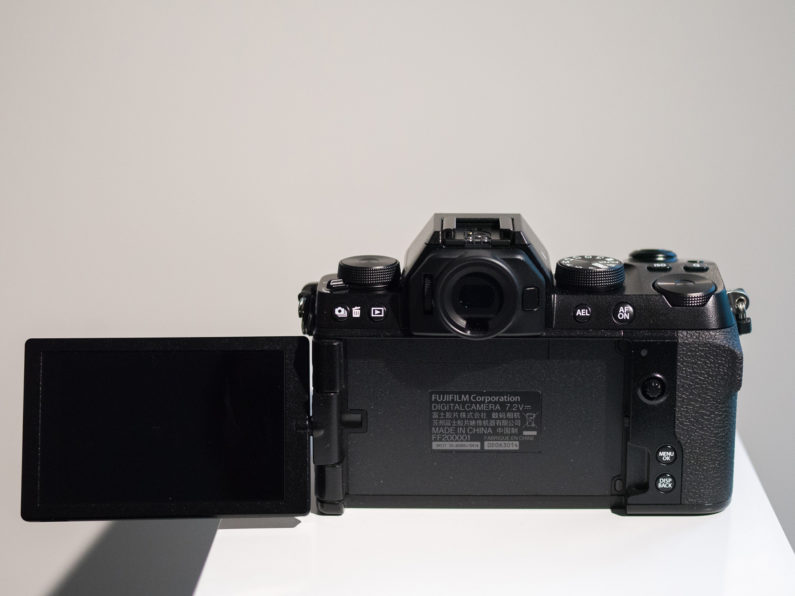
↑ The vari-angle design LCD display. Image by @law.rence.space
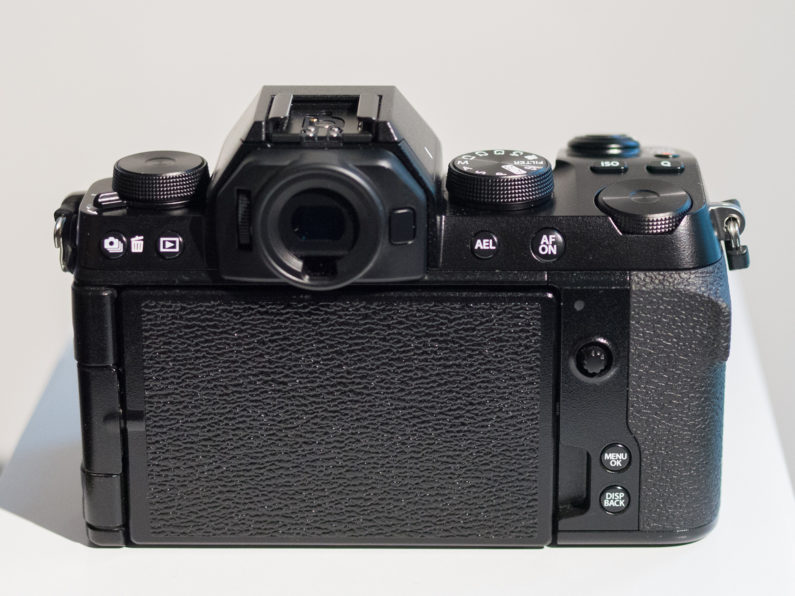
↑ You can hide the screen if you want. Image by @law.rence.space
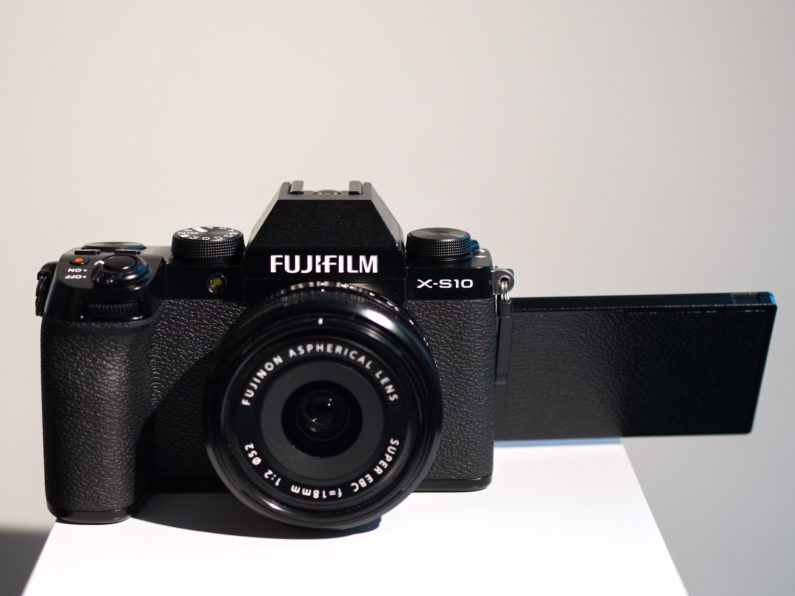
↑ Here’s the screen extended out. Image by @law.rence.space
What’s a really awesome feature is that unlike its similarly priced sibling, the X-T30, the X-S10 comes with built-in 5-axis sensor-shift image stabilization. To fit image stabilization in such a compact body, Fujifilm had to design this version to be 30% smaller in volume, and weight when compared to the one in the flagship X-T4. But what’s really cool is it can still offer up to six stops of stabilization. Technically, the X-T4’s image stabilization is better supposedly by giving its user up to a half stop more in image stabilization versus the X-S10; however, I reviewed the X-T4 a while back (review here), and in real world use, I don’t think there’s a huge difference or even a really noticeable one in terms of stabilization. My point is, the one in the X-S10 is great, especially if you’re going to use longer non-stabilized telephoto lenses. I tried the X-S10 with my XF 56mm f1.2 APD R lens, and it really helped out quite a bit.
Furthermore, the Fuji X-S10 is capable of shooting up to 8fps with its mechanical shutter, and up to 20 fps with its electronic shutter. While the X-T4 can shoot up to 15 fps with its mechanical shutter, 8fps to me is still plenty fast, and actually more than I would need for my work. Also, to be fair, cameras in this category aren’t necessarily designed for professional sporting events, so I don’t count the slower fps against the X-S10. If you did want even faster though, and you don’t mind a bit of cropping to your images, you can get up to 30 fps.
Other notable features are a rear joystick for selecting, and switching AF points as well as navigating through the menu, and for image playback. There’s also a pop up flash, which makes this camera great as an all in one, especially when you’re traveling. Of course, there’s Bluetooth and Wi-Fi connectivity, which will allow you to wirelessly share images to a mobile device or to use your device to control the camera remotely. The one feature that I feel like is missing for me though is dual SD card slots. In this category of cameras, it is definitely more than acceptable to have one SD card slot, so I don’t count this against the X-S10 but I would’ve liked to see two only because I honestly feel like this could potentially replace my X-T3 when I’m ready for a new camera. Lastly, there is no weather sealing but this isn’t out of the ordinary for a camera in this class. While it would be nice to have weather sealing, it isn’t a deal breaker for me.
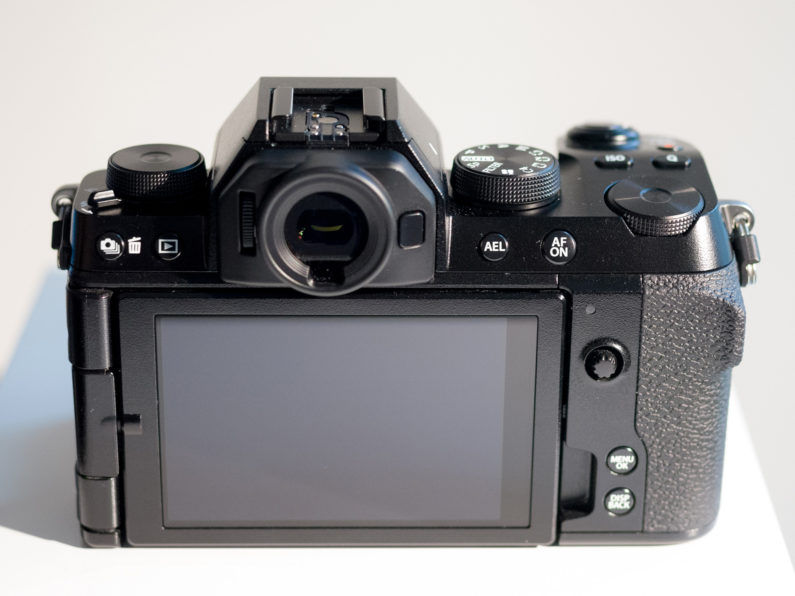
↑ The back of the X-S10 is nice and clean. Image by @law.rence.space
In addition to photography, you can definitely use the Fuji X-S10 for video work. It’s video capabilities include internal DCI/UHD 4K recording at up to 30 fps. While many cameras today have 4K video output, the X-S10’s footage is oversampled from an original 6K signal. It also allows filming in DCI format with a 17:9 aspect for that true cinematic look. Full HD recording up to 240 fps is also available for ultra slow-motion playback. Also, 10-bit 4:2:2 recording to an optional external recorder is possible with a micro-HDMI port. There’s also a 3.5mm microphone jack for more advanced audio recording.
Fujifilm X-S10 APS-C Mirrorless Camera Autofocus And Manual Focus:
Let’s talk about the autofocus now. The Fuji X-S10 uses a hybrid autofocus system with 425 phase-detection points for quick and accurate AF performance. There was a time when the Achilles’ Heel of Fuji cameras was their autofocus capabilities but I am happy to report that those days are long gone.
In practice, I found the autofocus to be excellent. Focusing speeds are downright blazingly fast at times. In fact, with focusing speeds as quick as 0.02 seconds, AF speeds are actually equivalent to the higher end models such as the X-T4 and the X-Pro3. That’s saying a lot considering the X-S10 is considered their midrange camera. It’s worth noting that the focus is also very accurate as well. I didn’t really have many missed shots caused by bad focus. To top it off, the focus works brilliantly at night. In fact, AF can produce sharp photos right down to -7EV. At this point, I feel what Fuji has to offer, especially in the X-S10, is drama free, and just works brilliantly.
I also was able to try out features like Face and Eye Detection AF as well, and was extremely happy with the X-S10’s abilities. I honestly feel like Fuji has one of the best face detection systems currently on the market. As some of you know, I am a boudoir and street fashion photographer, and while I did not get to use the X-S10 for that many shoots (corona virus cases were very high when I was testing the X-S10), I did try it for one, and the face detection was just so good. The face detection works wonderfully when recognizing faces, and it locks on to them with such tenacity.
Overall, the autofocus system in the Fuji X-S10 works superbly, and I think for most, it’ll be more than enough. Still, it’s not quite as efficient or as good as some of the Sony offerings. I still think Sony is really up there when it comes to autofocus capabilities. But like I said, the autofocus in the X-S10 should satisfy most. I know I am definitely happy with it, and I for one, find its capabilities more than I would ever need.
It’s always great to have an excellent autofocus system but there are times when you might want to rely on manual focus. Fortunately, the Fuji X-S10 is great at that as well, especially with is fantastic MF Assist functions. For one, there is Focus Peaking, which emphasizes in-focus areas on the screen with an increase of a solid color (you can choose the color). There’s also the Digital Split Image, and Digital Microprism. Both are digital versions of focusing tools that were used in classic cameras, and designed to help you get those sharp images you’re after.
Camera Image Quality:
As for image quality, the Fuji X-S10 uses the same APS-C-format 26.1MP X-Trans CMOS 4 sensor as the flagship models like the X-T4 and the X-Pro3. That means smooth color rendering, and tones with beautiful images that are up there with the best in the X-S10’s class of cameras. Fujifilm cameras are known for producing excellent results, and the X-S10 is clearly no exception. The sensor has been used in so many of their latest cameras, and therefore, has a proven track record. It is also back-illuminated for improved light receiving performance, and since there is no low-pass filter, images produced have plenty of detail in them, especially with those excellent X Series lenses.
Note from admin: Due to my recent website migration and updates internally, this review was actually finished back in Nov/Dec. The covid cases back then were very high in New York City, so I wasn’t out as much shooting. There is not as much variety in terms of photos as what I would normally put in my reviews but the photos should still give you a good idea of the capabilities of the X-S10.

↑ The setting here were 160 ISO and the for the lens, which was the XF 18-55mm f2.8-4, it was f5.6.
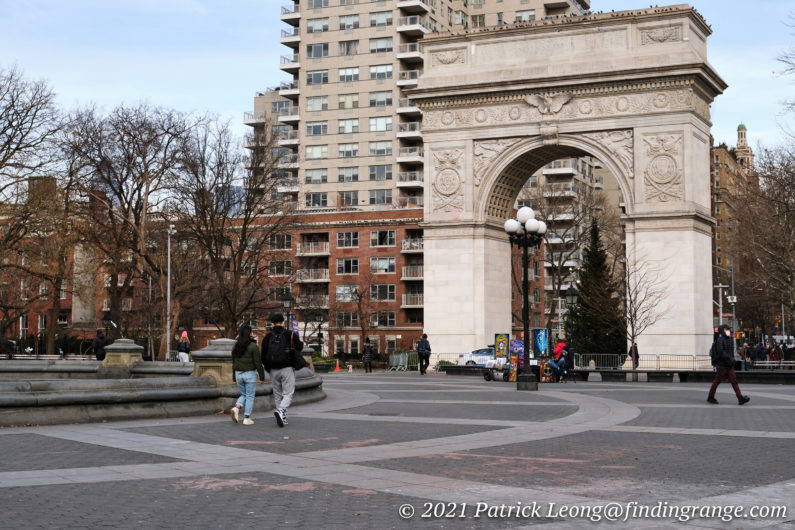
↑ This was also shot with the XF 18-55mm with it set at f7.1. I used 160 ISO here.

↑ This was shot with the XF 18-55mm. The settings were 400 ISO, and f8.
Dynamic range is also excellent. Working on the X-S10 RAW files, I notice how they really hold up quite well after editing. A lot of detail is retained in the shadow areas, while highlights are often very easy to recover. Contrast and color rendering are especially good as well.
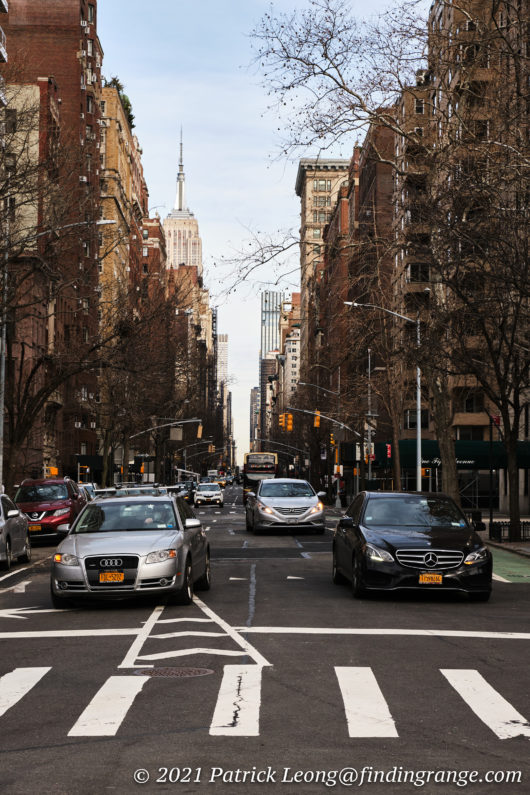
↑ The lens used here was the XF 18-55mm. The settings were 200 ISO and f8.

↑ Here’s another taken with the XF 18-55mm with the lens set at f7.1 and the camera set at 320 ISO.

↑ I took this with my trusty Zeiss Touit 12mm f2.8. The settings were 320 ISO and f6.4.
In addition, the high ISO capabilities of the Fuji X-S10 are excellent. Noise does start creeping in at 1600 ISO but nothing that is anything serious or out of the ordinary. At 3200 ISO, more noise does come into play but detail is still very high with color rendering still great. At 6400 ISO, you can still achieve excellent results although more noise does creep in, of course.

↑ Here’s an example of 1600 ISO taken with the XF 18-55mm set at f8.
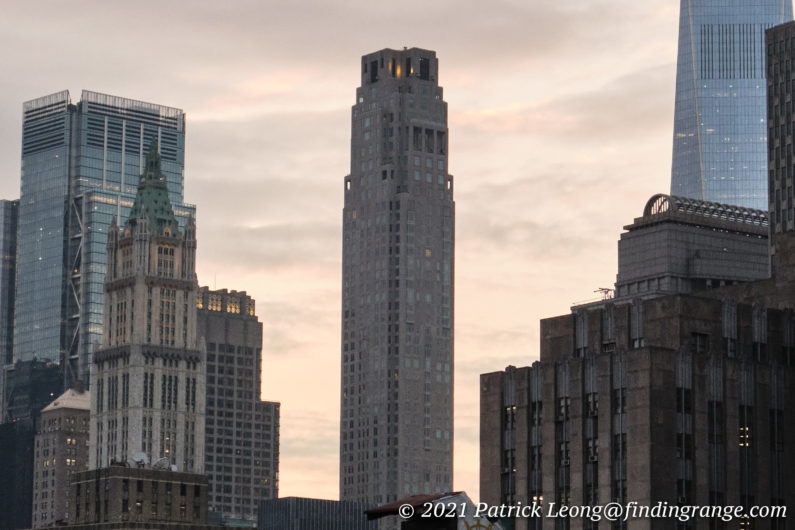
↑ Here’s a 100% crop of the photo above.
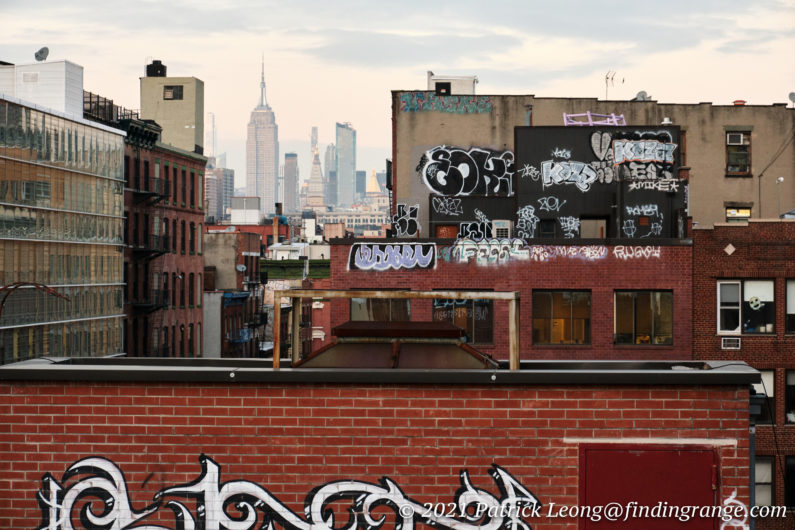
↑ Here’s an example at 3200 ISO taken with the 18-55mm set at f8.
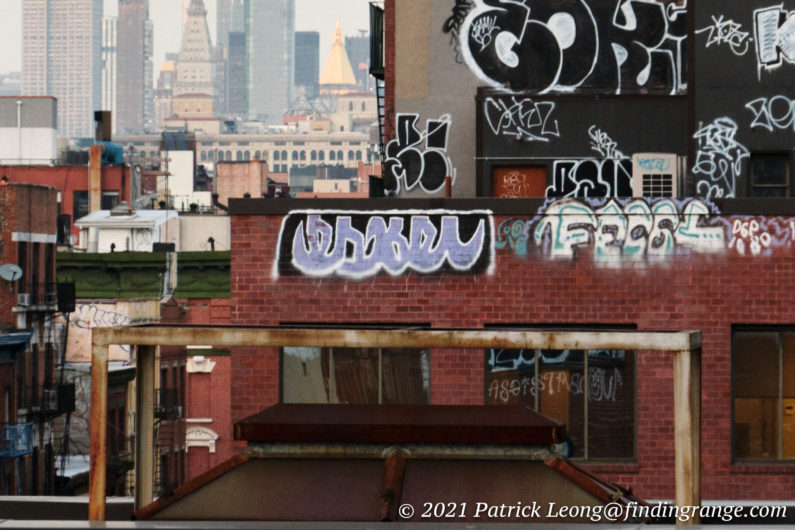
↑ Here’s a 100% crop of the photo above.
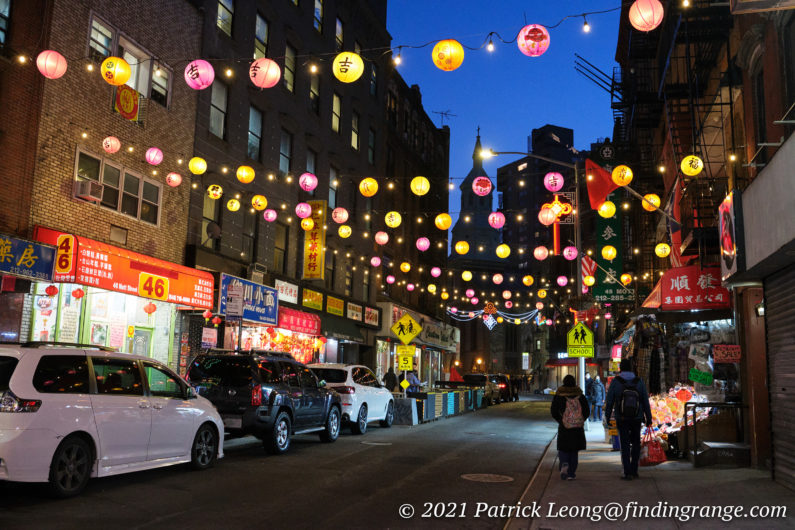
↑ This is example at 6400 ISO. This was taken with the 18-55mm set at f5.6.
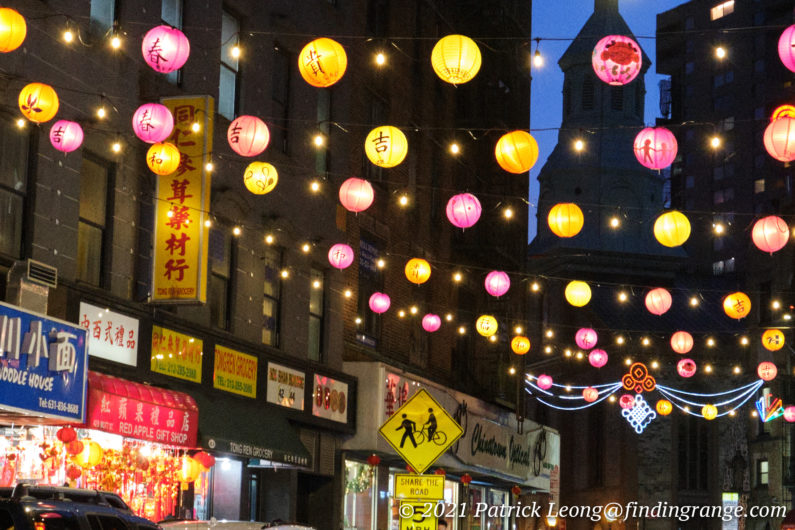
↑ Here’s a 100% crop of the photo above.
Like the flagship Fuji X-T4, I feel the X-S10 performs great even when you need to crank it up to 6400 ISO. Color, and contrast are well retained. When you go higher to say 12,800 ISO though, your files will definitely be considerably noisier. You’ll also have some desaturation and color issues. But with that said, this isn’t really out of the ordinary for any camera in the same class, and files at 12,800 ISO are still usable depending on your subject matter and proper exposure. Settings like 25,600 and 51,200 ISO are settings I usually save for when I truly need them.
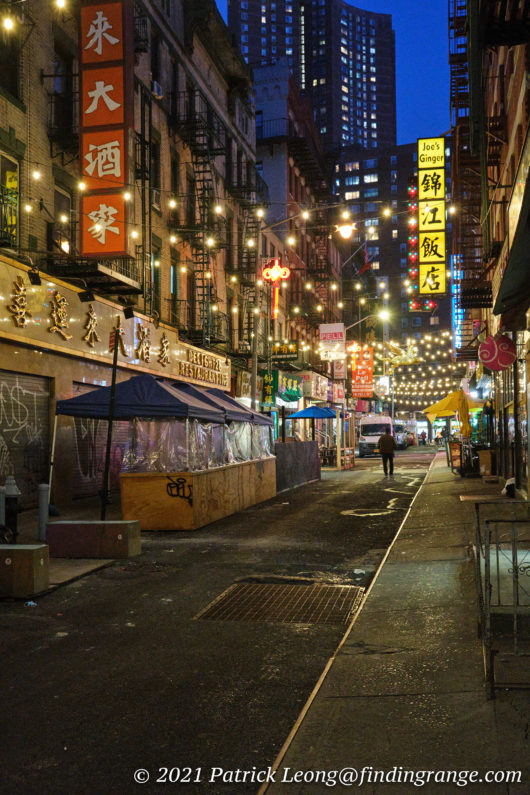
↑ Here’s an example taken at 12800 ISO. The lens used was the 18-55mm set at f5.6.
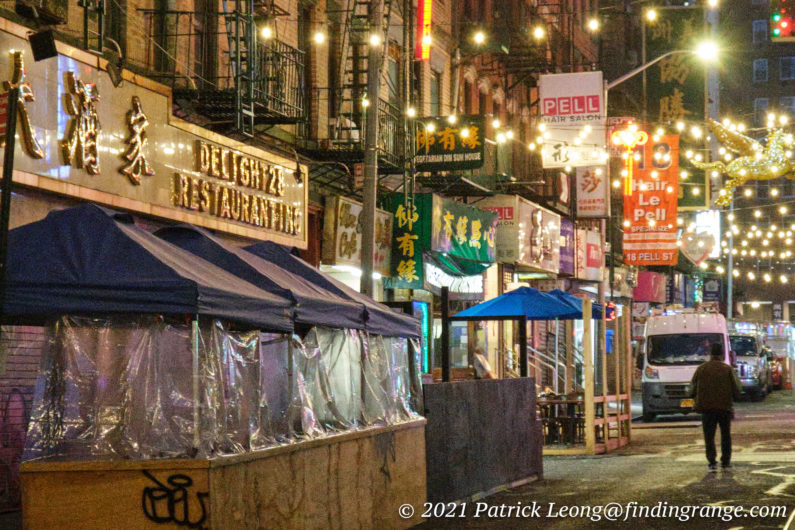
↑ Here’s a 100% crop of the photo above.

↑ This was taken at 25600 ISO. As you can see, the X-S10 still does a decent job considering the setting. This was taken with the XF 18-55mm set at f5.6.
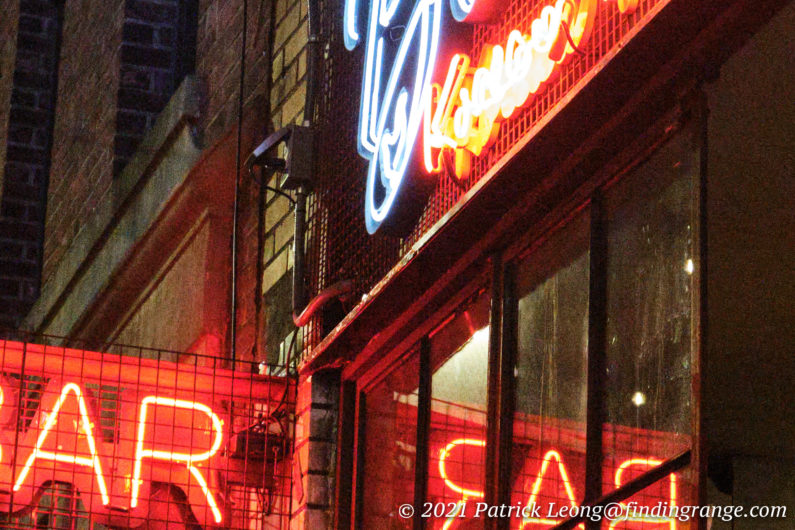
↑ Here’s a 100% crop of the photo above.
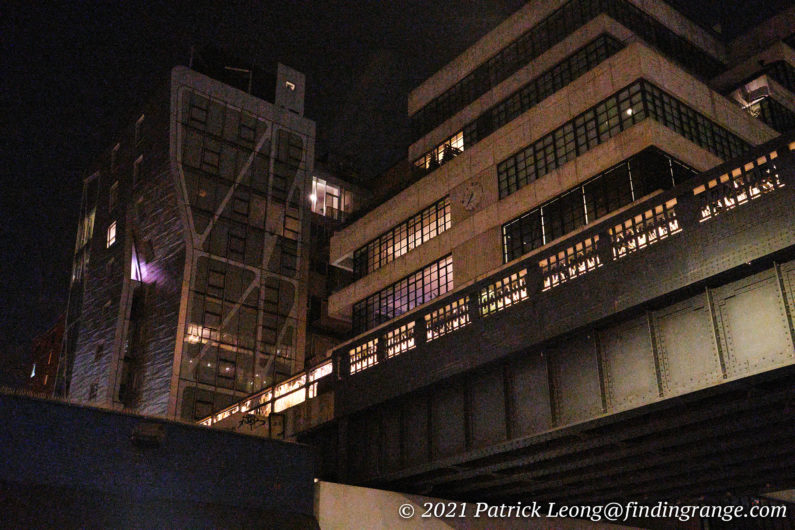
↑ Here’s an example at 51200 ISO. This was also taken with the XF 18-55mm set at f5.6.
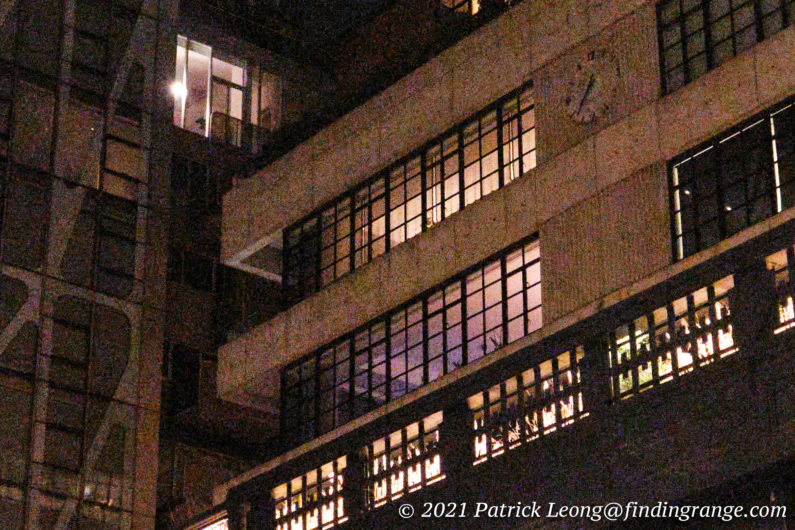
↑ Here’s a 100% crop of the photo above.
Now here’s the beauty of the Fuji X-S10 or pretty much any X Series camera: let’s just say you either don’t want to edit your own photos or you just don’t like shooting in RAW. That’s completely fine because the out of camera jpegs produced by the X-S10 are excellent. Fujifilm is one of those brands in the business that are known to produce stunning out of camera jpegs. Fujifilm has what they call the Film Simulation Modes, and there are currently, 18 different ones to choose from in the X-S10. You have choices like Provia, which is not only the standard mode but based on a Fuji slide film that is great for all subjects because of its generally neutral color reproduction. You also have Classic Chrome, which is designed to produce a look that is similar to documentary magazines of the 20th century. You even have some great black and white options. The point is, you will have tons to experiment with, and you won’t need to do any editing at all while still achieving excellent results.

↑ It got pretty quiet on some days when covid cases spiked again around November and December. This was taken with the XF 18-55mm early in the morning. The settings were 160 ISO and f7.1.
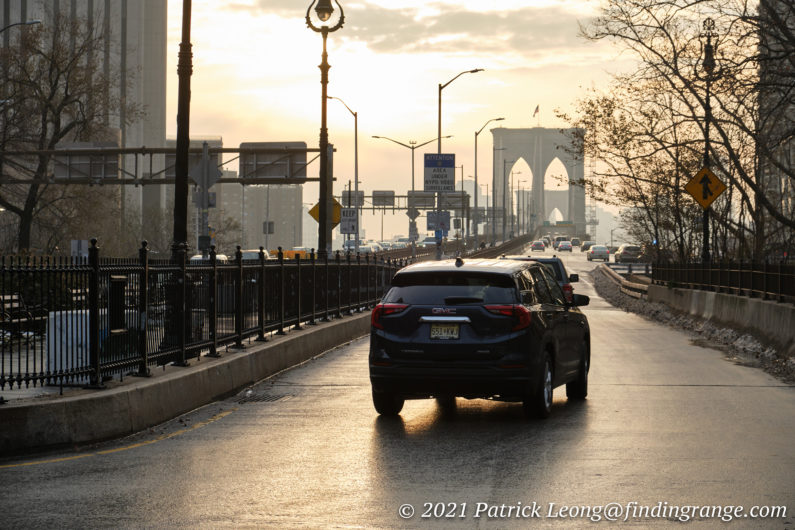
↑ This was taken with the XF 18-55mm with the settings being 320 ISO and f7.1.

↑ This was taken with the XF 18-55mm set at f8. The camera was set at 160 ISO.
Fujifilm X-S10 APS-C Mirrorless Camera Pros And Cons:
Pros:
- Excellent build.
- Excellent ergonomics; currently my favorite Fuji body in terms of ergonomics.
- Vari-angle design LCD display.
- Impressive electronics.
- Superb autofocus capabilities.
- Fantastic image quality.
- Great high ISO capabilities.
- Exceptional straight out of camera jpegs.
- Excellent selection of lenses available.
- Image stabilization.
- You’re getting a lot here for the price of just $999.
Cons:
- Wish it had the larger battery of the Fuji X-T4.
- Would’ve liked to see dual SD card slots.
- No weather sealing.
Fujifilm X-S10 APS-C Mirrorless Camera Verdict:
I feel like the Fuji X-S10 is an excellent addition to the X Series family. In fact, this along with probably the new Fuji X-E4 are my favorite currently. With the X-S10, you’re getting a lot for just $999. For one, you have the main guts in this camera from flagships like the X-T4 and X-Pro3, which means you are essentially producing the same image quality. The autofocus systems are essentially the same too. The X-T4 and the X-Pro3 are arguably up their with the best in the APS-C world right now, and the X-S10 is basically borrowing quite a bit of tech from those cameras. So, while the X-S10 is technically midrange, it really is all in the beholder: you can definitely get pro results from it because it has the capability of producing it.
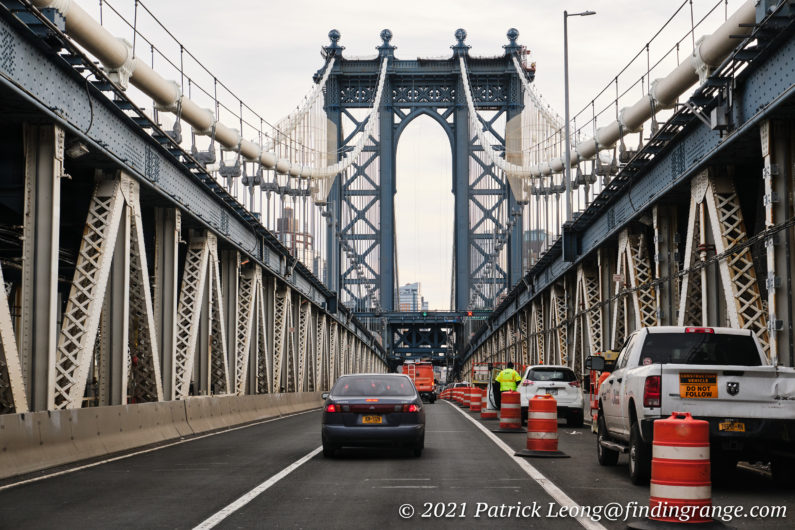
↑ Here’s a photo taken with the XF 18-55mm set at f8. 400 ISO was used here.
But besides having all the important features of the higher end Fuji cameras, the new design of the X-S10 is quite appealing as well. It’s solidly built but besides that, it’s also compact, and ergonomically, I think this is the best X Series camera so far. The new grip really makes the camera much more of a joy to use than say the X-T30. Yes, the design layout is different in that you don’t get the classic controls you would typically find on other X Series cameras. Again, this camera is designed to appeal to photographers that are maybe coming from the DSLR world, and they don’t necessarily want those classic controls. But with that said, for those who are considering switching from another Fuji camera to this one, the controls of the X-S10 aren’t difficult to get used to, and the ergonomics of the new body might really be worth it for some.
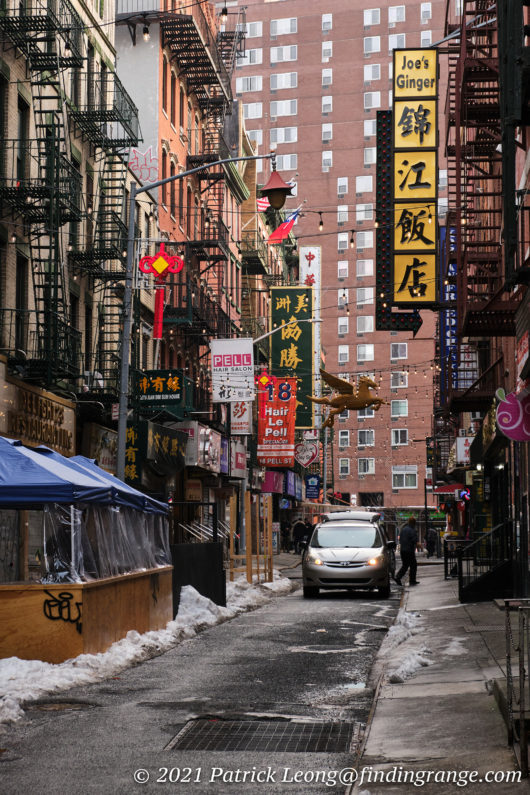
↑ This photo was taken at 1250 ISO. The lens used was the XF 18-55mm set at f8.
Overall, this camera is almost everything that I want from Fujifilm. I feel like some of the higher end models now are getting up there in price, and while they do have a ton of features, I don’t necessarily even need all of those. For instance, the Fuji X-T4 shoot 15 fps with its mechanical shutter. I’ll never use that. The 8 fps from the X-S10 is more than enough for me. The important features like image quality, and overall electronics (like the autofocus) are what’s important to me, and this camera has all of that for $999. It can essentially produce the same results as its top end siblings. The only two things for me that would make this perfect would be dual card slots and maybe weather sealing. I’ve grown accustom to dual card slots mainly because I like to have backup when I’m on a job. Weather sealing is nice but not necessarily a huge feature I care about to be honest.
So, the bottom line is the X-S10 is well worth taking a look at, if you’re in the market to buy a new camera. It really is feature packed, and I almost forgot, for those who may be new to the X Series system, by getting an X-S10, you are also opening yourself up to some fantastic lenses. I highly recommend this camera!
Thanks for taking the time to read my review! If you’re considering purchasing the handgrip for the X-S10, and my review helped you decide, please help support this site by purchasing from the links below or any mentioned in this review. It will not cost you anything extra. Thank you for your support!


Nice review!
I’ve been a Fuji X user for the past (nearly) seven years and really enjoy this system. The traditional straightforward controls are one of my biggest joys from using my XE-1. About the only negative I have with my camera is the sometimes slowish autofocus, which isn’t a big deal for me. The image quality from that camera coupled with my set of prime lenses (14/2.8, 23/1.4 and Zeiss 32/1.8) is really special. I’m glad to see Fuji keeps refining this system.
Hi Keith!
Thanks for the kind words! I have my X-E1 as well, and I love it! It’s such a great camera, and that list of primes you mentioned are awesome. As for the controls, I agree. The controls on it are definitely nice. The camera is straightforward, and always easy to operate. Btw, great work on your site! I especially love the Abstract Montréal shots. Appreciate you stopping by!
Best,
Patrick
Thanks Patrick. Abstract Montréal is, I think among other things, part of my never ending quest to make double exposures that aren’t actually double exposures.
Haha well either way, I love your work, Keith! Keep it up!
Thank you for the nice review!
Currently I’m trying to figure out as beginner whether the XS10 or the XT3 is a good choice to start with. My main purposes are for landscape, travel and street photography so I wonder if the weather sealing will play a part.
Lens of choice would be the 16-80 paired with both, then move on to the 70-300. Maybe I will a prime or two later on as well.
Would really appreciate your advice on the same!
Hi Yehan,
Apologies for the late reply! I’ve been really busy lately.
Both cameras are excellent choices. Here are the things that I like about the X-S10: It’s a bit smaller than the X-T3. I love the hand grip. I also love that it has image stabilization, which works quite well.
What I like about the X-T3: I’m definitely a fan of the dual memory card slots. For my shoots, I just like having back up just in case although I’ve never had a failed memory card yet. It’s a bit more rugged than the X-S10 although the X-S10 is still a very solid camera. The X-T3 is also weather sealed.
It’s tough to choose between these two because both cameras are excellent. I would say if you really think you need weather sealing, go with the X-T3. The larger body may help give you a bit more support when you’re shooting with larger lenses like the 16-80mm or the 70-300mm. But with that said, the X-S10 has a great grip that also offers decent support, and the image stabilization will be helpful for longer focal lengths like the 70-300mm. I don’t think you can go wrong with either choice though. Both have essentially the same sensor, etc., so you’ll get equally excellent results.
Let me know if you have any other questions. I’m happy to help.
Best,
Patrick
Great review. I love the look of the grip on this. My XT2 I love but like my old Nikon FE2 the lack of grip is frustrating. Living on Dartmoor the lack of westherproofing is frustrating but I love you can take one handed photographs … I think its this rather than the XT4. As I get older lightness when walking is appreciated by my knees!
Hi Tom!
Thanks for the kind words, and for taking the time to read it!
The X-S10 is a fantastic alternative to the X-T4 in my opinion. I’m currently an X-T3 owner, and even I’m considering switching over the next time I decide to upgrade. If you have any questions about it, please feel free to ask! Thanks for stopping by, and great photos on your Flickr btw! Thanks for sharing them!
Best,
Patrick